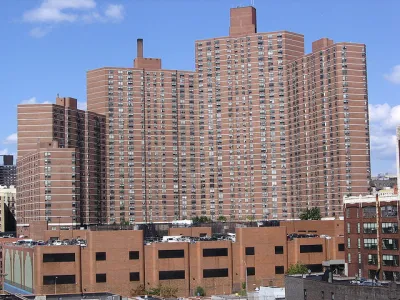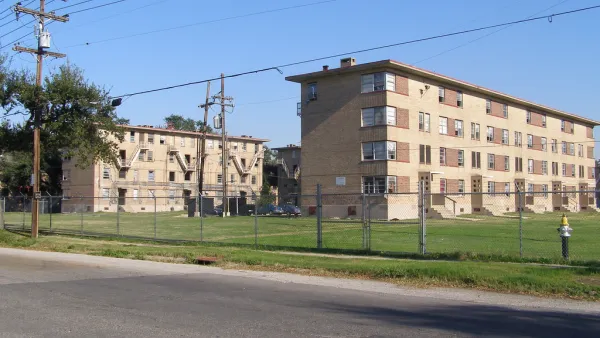The amendment is a thorn in the side of affordable housing advocates, who blame "Faircloth Limits" for inhibiting public housing construction.

As the debate over federal housing policy heats up, Jared Brey provides a concise explanation of the Faircloth Amendment, a 1990s-era rule that has been a recent target of affordable housing advocates. Touted as the "first step to addressing the country’s housing affordability problem" by Ross Barkan in the New York Times, repealing the amendment would "remove a legal obstacle to a series of ambitious housing plans that progressives have rallied behind."
Introduced as part of the 1998 Quality Housing and Work Responsibility Act, the Faircloth Amendment amended the Housing Act of 1937 to maintain public housing units at 1999 levels, effectively preventing housing authorities from ever maintaining more public housing than they did then. The amendment was enacted amid a broader welfare reform movement "grounded in a belief that public assistance programs were detrimental to people’s ability to achieve economic independence." In the 1990s, many lawmakers had a perception of public housing as "crime-infested, unhealthy places that kept people trapped in poverty."
However, "Faircloth Limits" aren't the biggest factor in limiting affordable housing. "Since the 1980s, the restriction of federal funding has had a much bigger impact on public housing than the Faircloth Amendment," and many cities own fewer units than their Faircloth limits allow. A lack of federal funding is the most pressing obstacle facing affordable housing production, but with proposals like the Green New Deal for Public Housing on the table, which calls for $180 billion in spending, significant change in federal housing policy seems more possible.
FULL STORY: What Is the Faircloth Amendment?

Analysis: Cybertruck Fatality Rate Far Exceeds That of Ford Pinto
The Tesla Cybertruck was recalled seven times last year.

National Parks Layoffs Will Cause Communities to Lose Billions
Thousands of essential park workers were laid off this week, just before the busy spring break season.

Retro-silient?: America’s First “Eco-burb,” The Woodlands Turns 50
A master-planned community north of Houston offers lessons on green infrastructure and resilient design, but falls short of its founder’s lofty affordability and walkability goals.

Test News Post 1
This is a summary

Analysis: Cybertruck Fatality Rate Far Exceeds That of Ford Pinto
The Tesla Cybertruck was recalled seven times last year.

Test News Headline 46
Test for the image on the front page.
Urban Design for Planners 1: Software Tools
This six-course series explores essential urban design concepts using open source software and equips planners with the tools they need to participate fully in the urban design process.
Planning for Universal Design
Learn the tools for implementing Universal Design in planning regulations.
EMC Planning Group, Inc.
Planetizen
Planetizen
Mpact (formerly Rail~Volution)
Great Falls Development Authority, Inc.
HUDs Office of Policy Development and Research
NYU Wagner Graduate School of Public Service




























